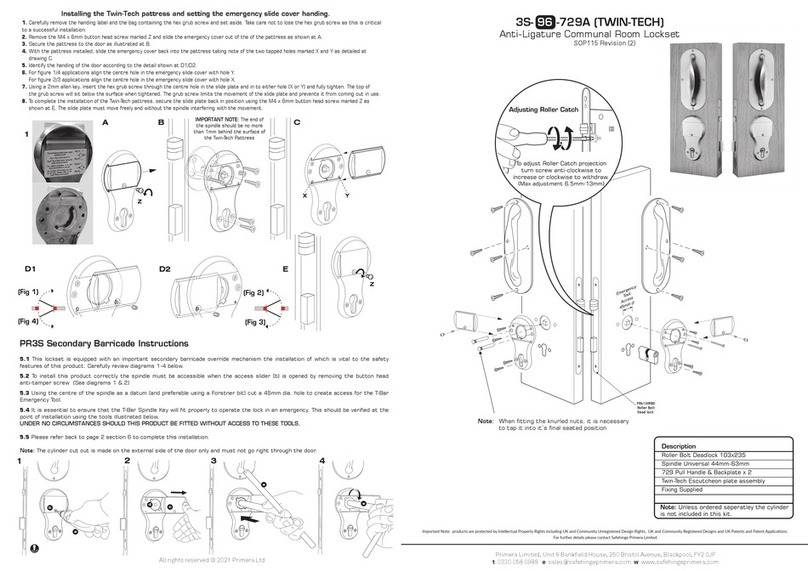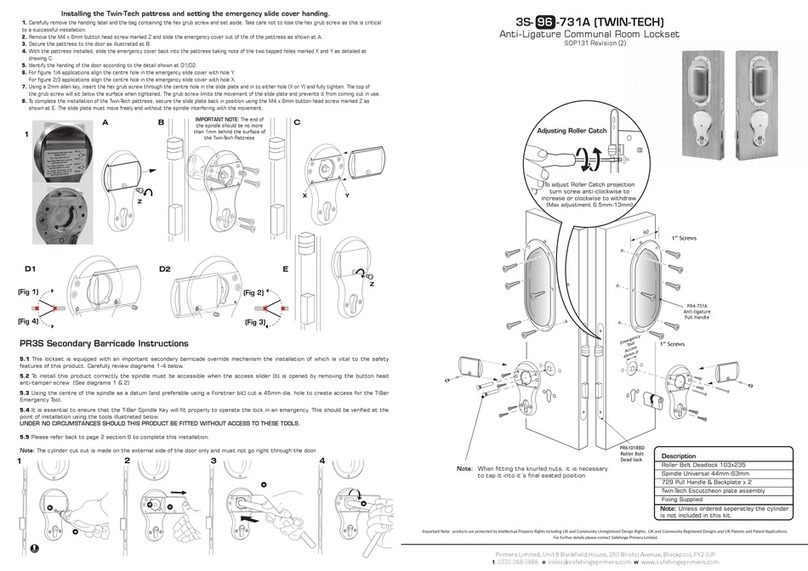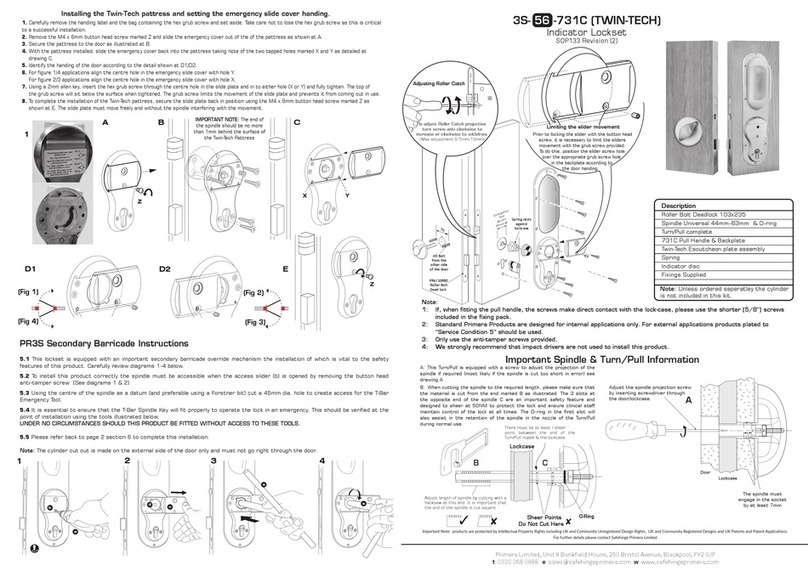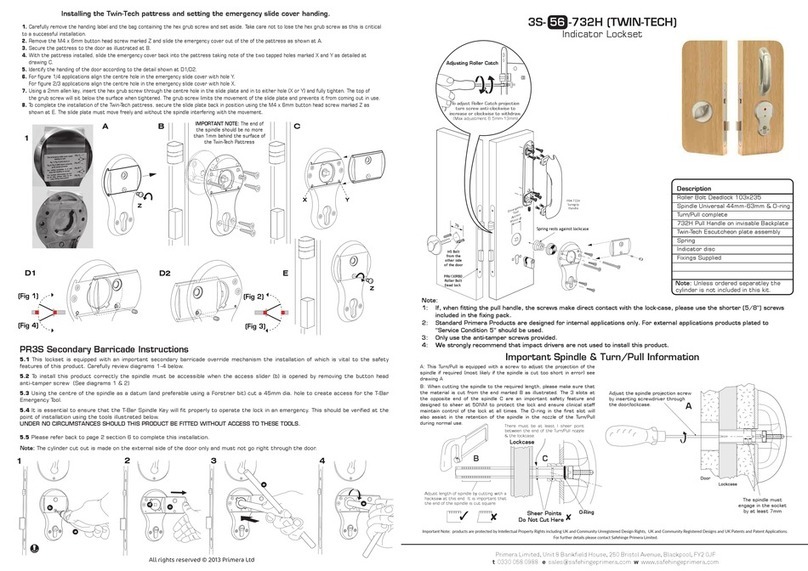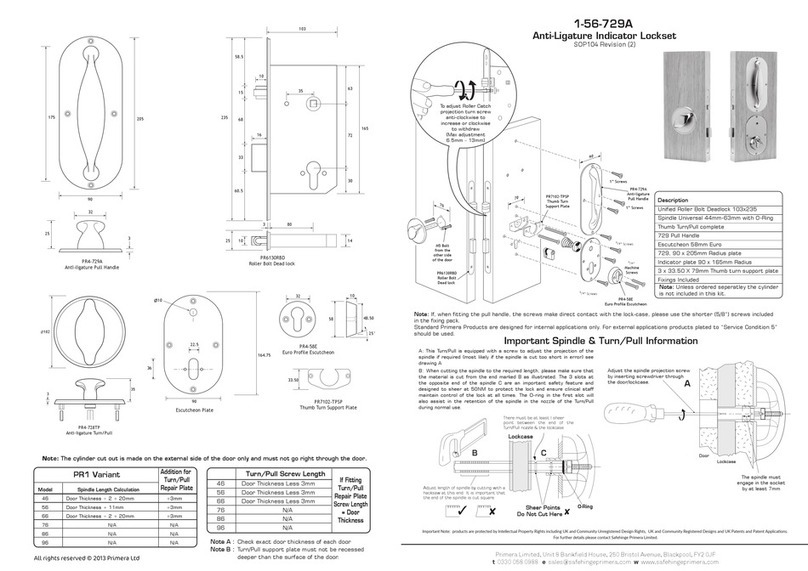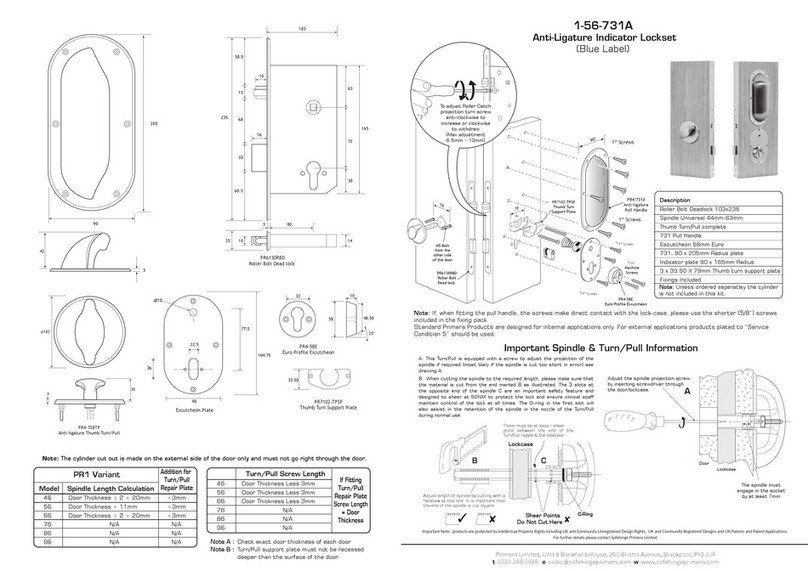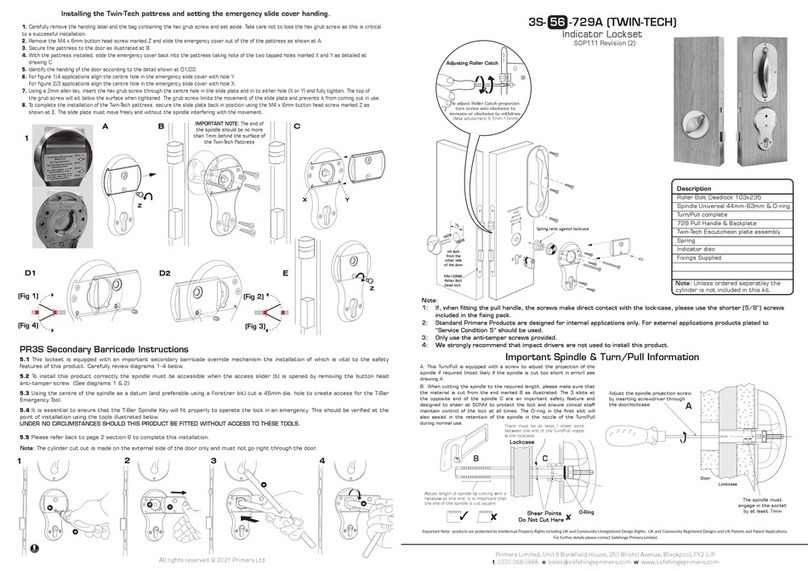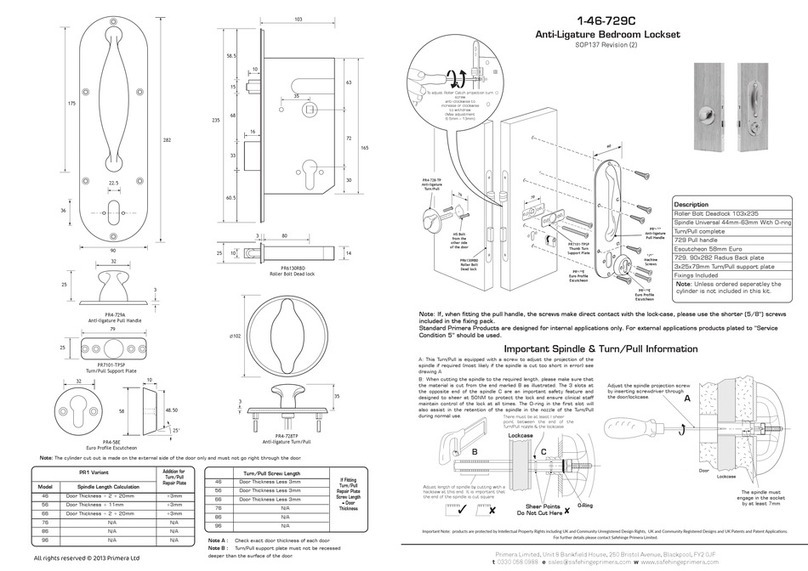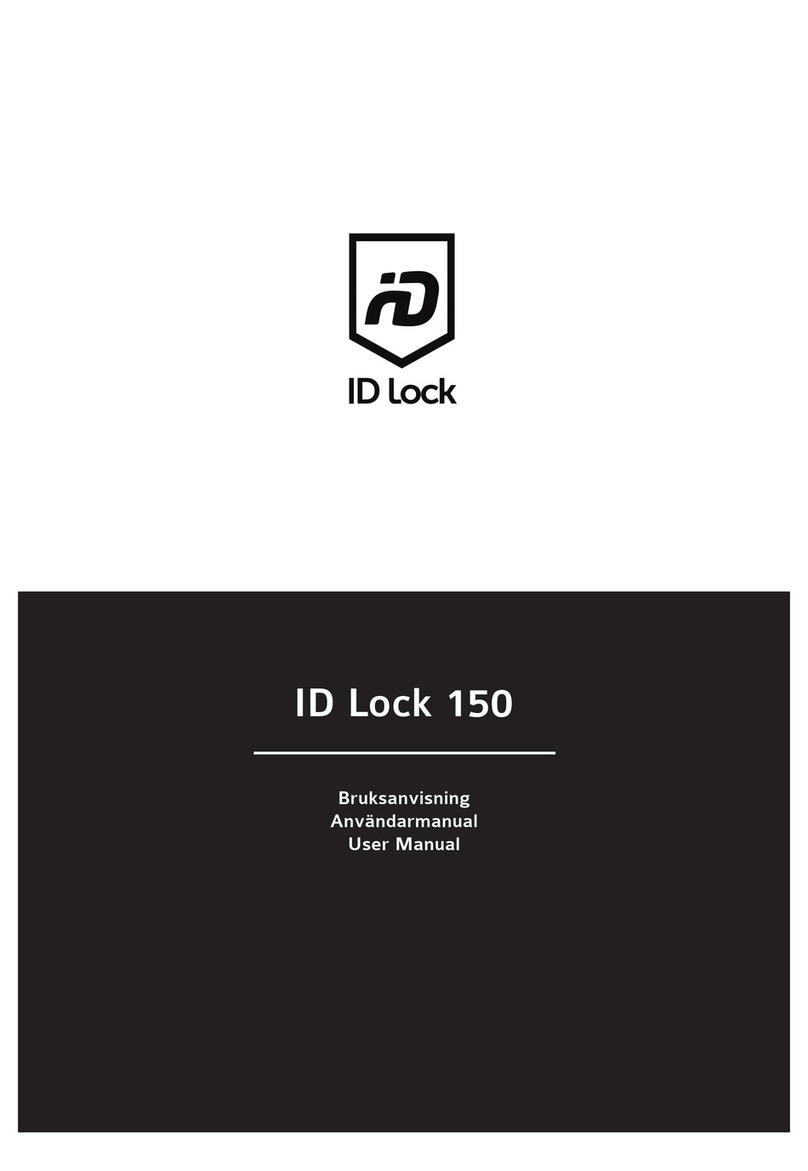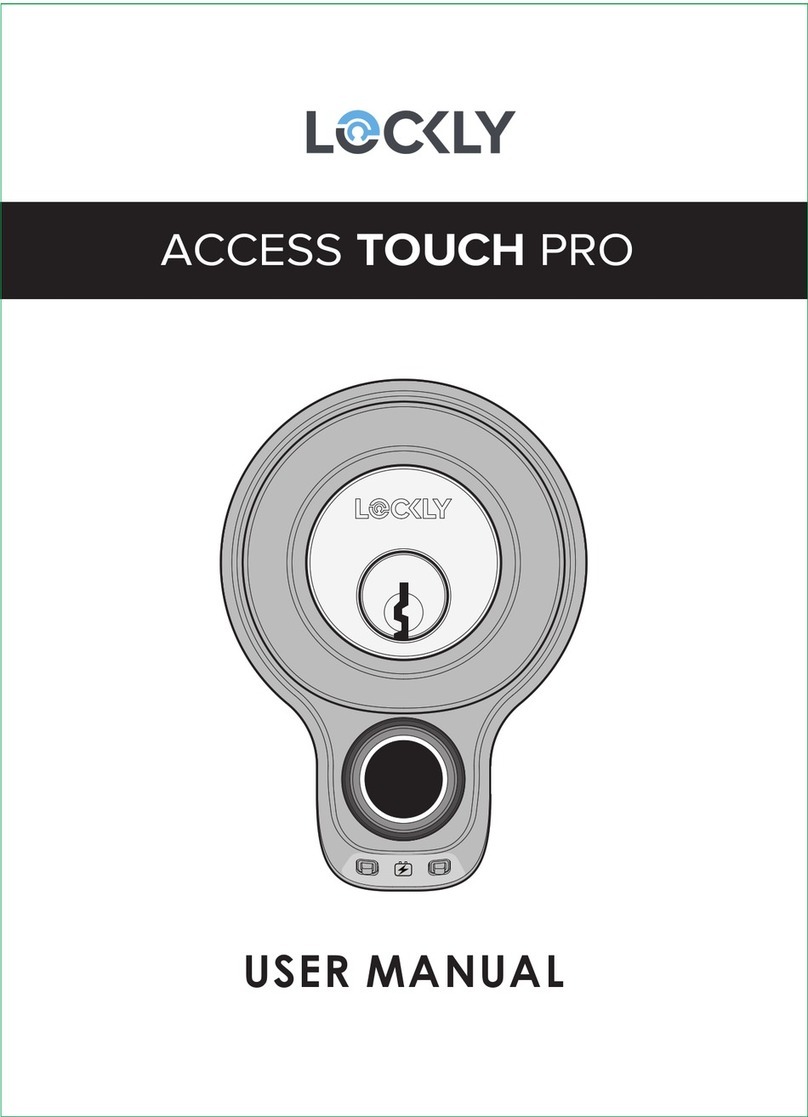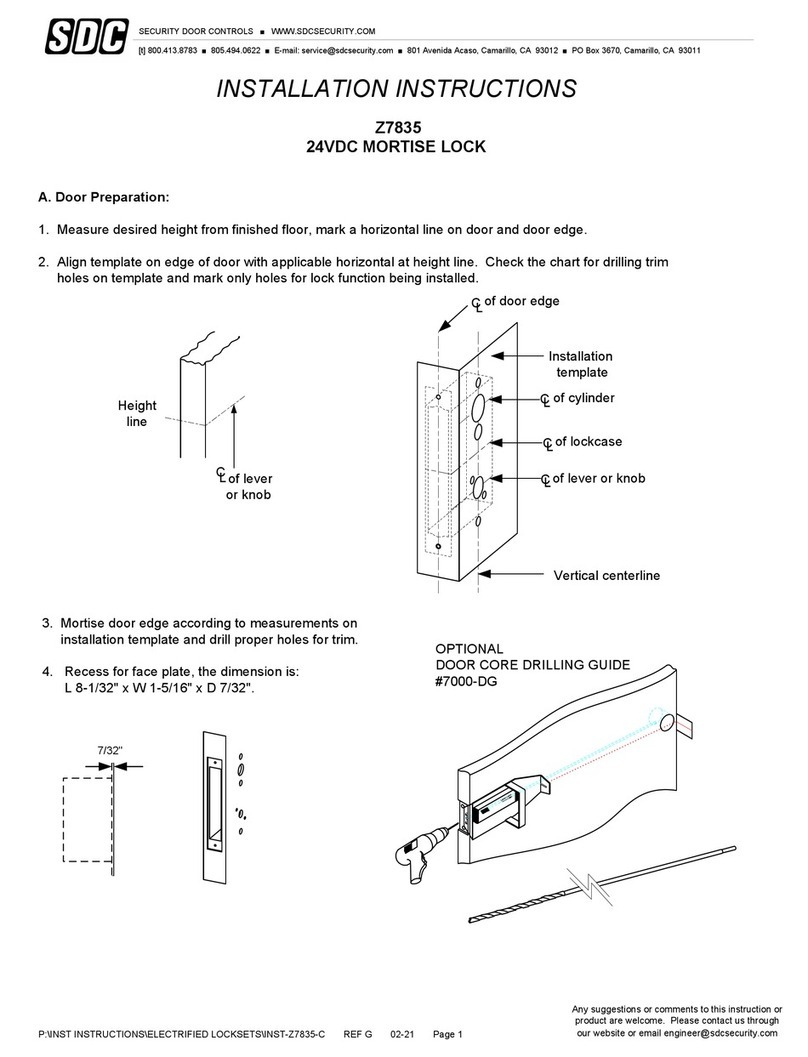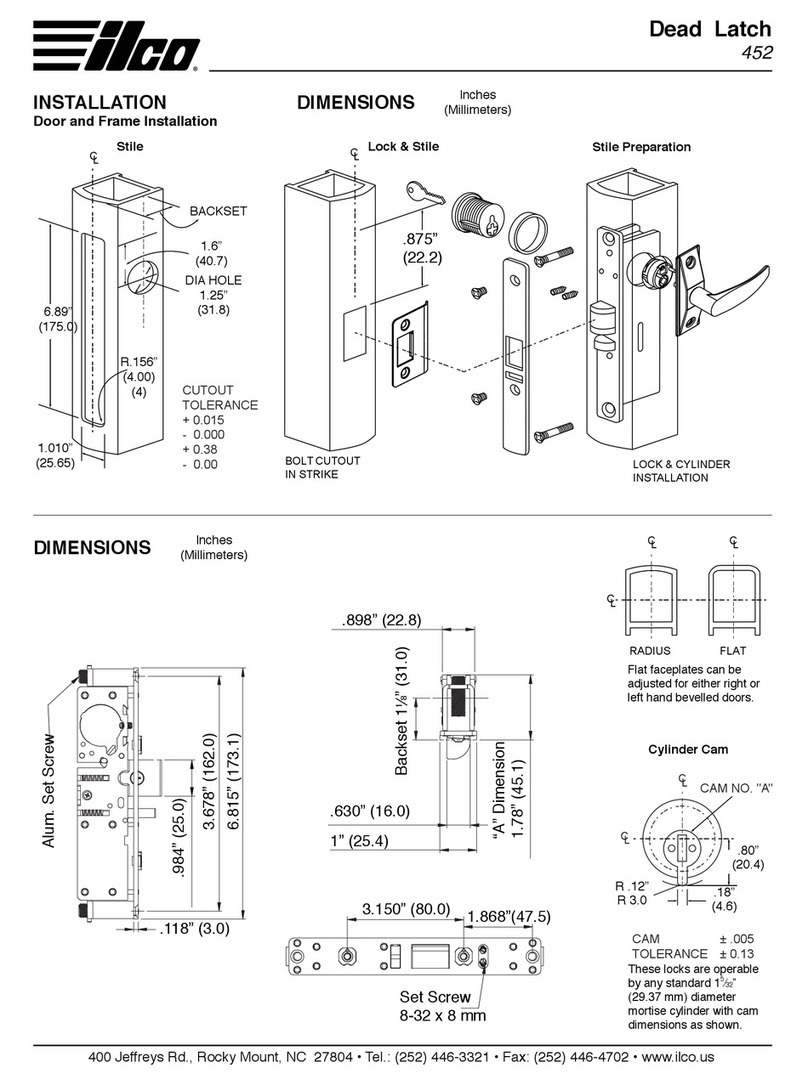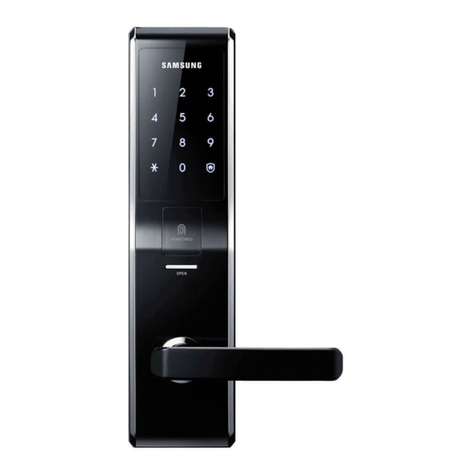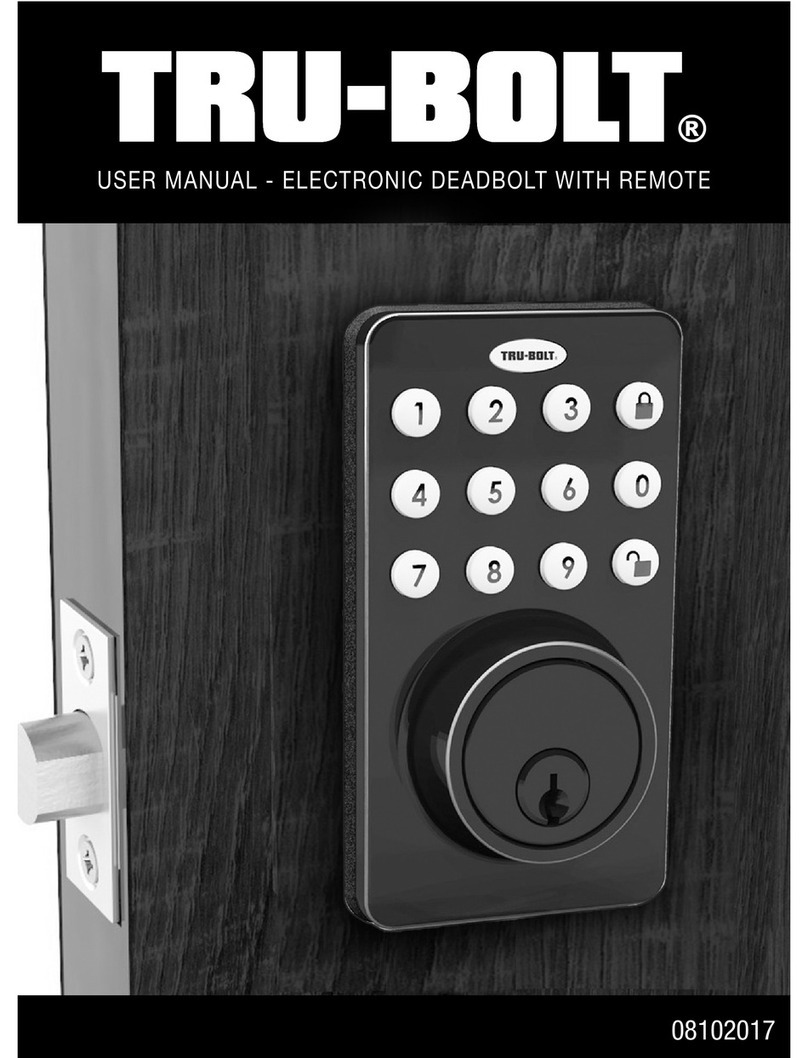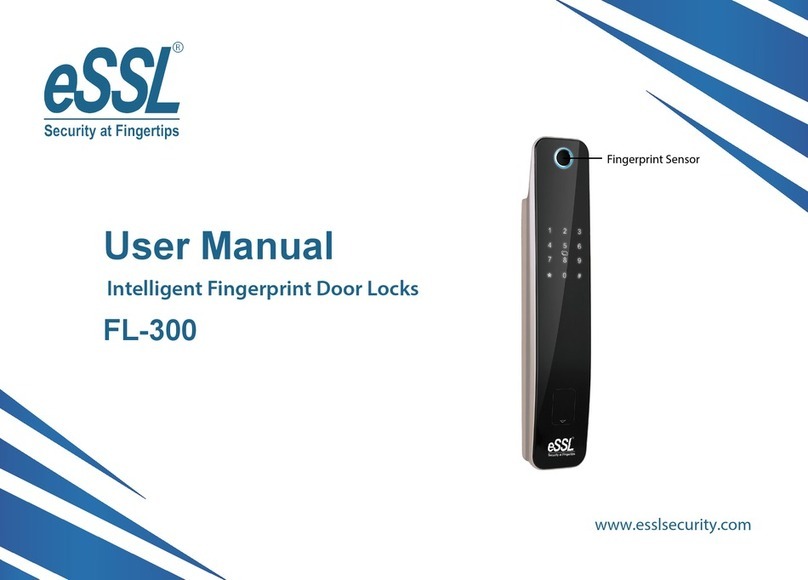
Fing Guide
Primera an-ligature locksets are not a DIY product. Installaon should be carried out by a qualified trades
person suitably equipped to facilitate a professional installaon. These guidelines assume that the installer is
familiar with the general principles of lock installaon and as such, serve only to provide addional guidance
on some of the more specific issues relang to the installaon of Primera an-ligature lock sets.
1) Decide the opmum posion for the lock on the door. Then mark out and prepare a morse hole 18W
x 110D x 175H (mm). The hole must be vercal and central to the core of the door and there must be
sufficient clearance for the lock to centrally align in the morse pocket. Adjust accordingly for doors with a
leading edge. Ensure that the morse is free from all debris.
2) Carefully review the exploded view on page 1. For models 76 , 86 & 96 please go straight to secon 4.
3) For models 46 , 56 & 66 (where Turn/Pull PR4-728-TP is supplied) using the template provided, mark
the 5 internal and 3 external reference points and drill the door to the size detailed. Care should be taken to
ensure accuracy and that the holes are in horizontal alignment. Place the lock back in the morse to check
alignment and adjust if required.
4) Connuing with the template, mark out and neatly drill for the installaon of the locking cylinder ensuring
that the hole is in horizontal alignment. Do not remove more material than is absolutely necessary. Please
ensure sufficient clearance for the back of the single Euro cylinder on models 46 , 56 , 66 & 76 as shown
in figure 1A.
5) Models 86 & 96 require a through hole for the key-key cylinder. Locks with a PR2, PR3 & PR3S prefix
are supplied with an important Secondary Barricade Override safety feature. They must be configured to
ensure nursing staff can gain access to the spindle concealed under the external escutcheon plate. This is
achieved by removal of the an-tamper screw(s) and moving the slider on the escutcheon plate to access the
spindle. Please refer to page 4 for specific informaon on the installaon of this model.
6) Aer following the specific door preparaon guidelines for this model detailed overleaf, please install the
remainder of the ironmongery according to the exploded view and, where Turn/Pull PR4-728-TP is supplied,
in the following order:
A) With the lock inserted (not screwed) in to the morse hole,
offer the round Turn/Pull and 8mm spindle on to the door. The
spindle should go in to the lock follower and allow the Turn to
sit flat against the surface of the door without force. If the Turn
does not sit freely against the surface of the door then the lock
is out of alignment in the morse which should be adjusted
accordingly. Important: If force is used to pull the Turn/Pull
back to the door this will lead to binding, difficult operaon and
possibly premature failure.
B) Cut the 2 x M5 Torx Pin machine Screws to the correct length to ensure sufficient penetraon in to the
Turn/Pull screw ports. If the screws are cut too long the Turn/Pull will not pull firmly back against the surface of
the door resulng in a ligature risk! Secure the Turn/Pull on to the door fastening the screws through the
Twin-Tech escutcheon assembly.
Take care not to over-ghten the fixing screws!
IMPORTANT: When installed correctly the
Turn/Pull should not pass through the horizontal
posion.
C) Install the locking cylinder using the screw
provided again ensuring horizontal alignment. Do not over ghten the cylinder retaining screw as this will
restrict the movement of the key and, in extreme cases can cause the cylinder to collapse. We recommend
that final adjustment is undertaken by hand. Check that the key turns freely and will throw and withdraw the
lock bolt. Important: With the Turn/Pull held rigid the key should withdraw the bolt.
WARNING: This lock should only be used with
cylinders where the cam comes to rest as shown at
Fig ‘A’ when the key is removed.
If using mul-posioned cam cylinders it is
essenal that the cam is posioned accordingly.
Without this the emergency override feature may
not work which could cause damage to the lock.
D) Secure the lock in the morse hole with the an-tamper screws provided and aach face-plate.
Reconfirm that the Turn/Pull and key sll operate the lock freely.
E) According to the exploded view, align all remaining fings and fasten to door using the an-tamper screws
provided. All plates should be secured flat to the surface of the door to prevent ligature risk! Shorter 5/8ths
screws are provided in the fixing pack for circumstances where the 1” screws clash with the lockcase.
F) Finally, mark out and install the strike plate. To adjust the roller catch please refer to magnified view on
page 1. With the door in the closed posion, operate the lock to ensure that the bolt travels freely between
the locked and unlocked posions.
C
L
C
L
14
110
1825
83
Backset
Clearance required for
back of cylinder on locksets.
( 46 , 56 , 66 , 76 )
For further guidance please contact our Technical Help Line on:
0044 (0) 1253 508643
Fig.1 Fig.6 Fig.7
Fig.4 Fig.5
Fig. 2
Fig.1a
B
A
Posion of the cam when key removed.
IMPORTANT: The angle of the tabs
on the strike plate are factory set.
Under no circumstances should
these be adjusted. Doing so could
cause a lock-out!
IMPORTANT: In the interests of safety, when installing the strike plate in
the frame of the door drill a 19mm
Ø
hole to a depth no greater than
5.5mm from the face of the frame. This will ideally allow the the tabs on
the strike plate to rest against the base of the hole as shown in Fig 8.
Fig.9
Fig.8
5.5mm Maximum Frame of the door from above.
19mm
Ø
IMPORTANT: If the strike plate included in this kit does not carry the logo it is not a genuine part.
Fing an unbranded strike plate will invalidate the warranty of the lock. In such circumstances please refer to
your supplier.
